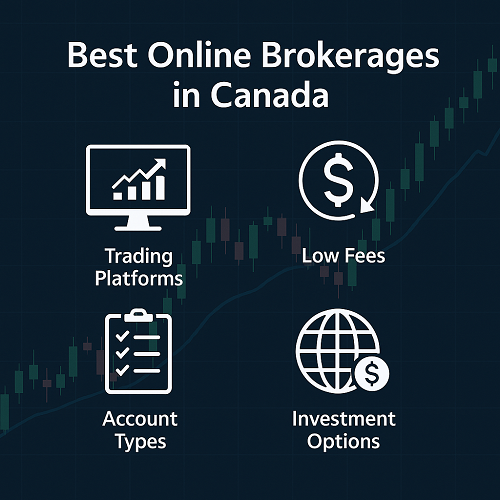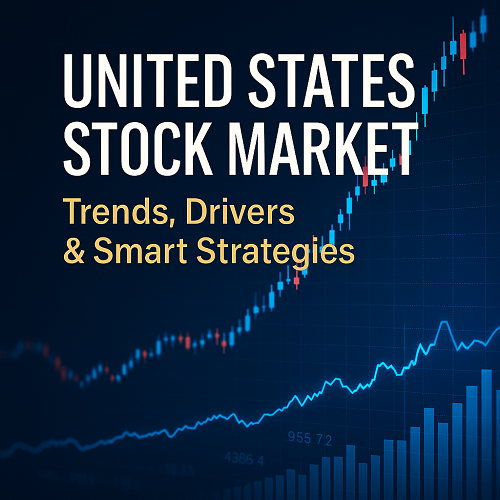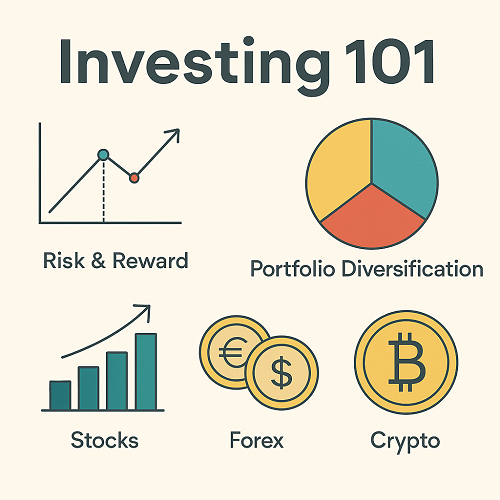As of 2025, the online brokerage landscape in Canada is more competitive, feature-rich, and cost-conscious than ever. Low (or zero) commissions, commission-free ETFs, fractional trading, advanced tools, global market access, and crypto integration have all raised the bar. Choosing the best online brokerage is no longer just about low fees—it’s about matching the platform to your trading style, account types, and future ambitions (active trading, long-term investing, options, alternatives, etc.).
This guide will:
- Explain the critical selection criteria (beyond just fees)
- Profile and compare the top brokerages in Canada (2025 edition)
- Provide side-by-side feature & cost comparisons
- Offer decision frameworks: “Which broker fits you best?”
- Address common questions and pitfalls
- Give actionable tips for transitioning or opening new accounts
By the end, you’ll have a clear roadmap to select—or switch to—the optimal online broker that aligns with your investment goals in Canada.
Let’s dive in.
What Makes a Great Online Brokerage?
Before comparing names, it’s essential to define what “best” really means in 2025. Here are the key pillars every serious investor should evaluate:
| Pillar | Why It Matters | Key Metrics & Qualifiers |
|---|---|---|
| Trading Costs & Commissions | Even small differences compound over time, especially for active traders | Per-trade cost, per-share fees, minimums, sliding volume tiers |
| Account Fees / Inactivity Charges | A broker that kills you with hidden fees isn’t worth the lower commission | Inactivity fees, account maintenance, transfer-out charges |
| Product Variety | You may start with stocks but expand into options, bonds, crypto, etc. | Options, OTC, mutual funds, ETFs, futures, forex, crypto |
| Market & Currency Access | To diversify globally, you need access beyond TSX | Ability to trade U.S. markets, foreign exchanges, currency conversion costs |
| Platform & Tools | Efficient tools can enhance decision-making and trading speed | Charting, screening, order types, mobile + desktop parity |
| Liquidity, Execution & Data Quality | Slippage, order routing, and market data latency matter for serious traders | Order execution speed, level 2 data availability, market depth |
| Regulation & Safety | Trust and security of your capital must be assured | IIROC membership, CIPF protection, financial stability |
| Customer Support & Reliability | Low downtime and reliable support save you stress and money | Support hours, live chat, phone, educational content |
| Promos & Incentives | Attractive bonuses can tilt the decision for new accounts | Cash bonuses, free trade periods, referral perks |
A platform that leads in one or two dimensions but fails significantly elsewhere is not ideal. The best broker fits your balance of cost, features, and usability.
Top Canadian Online Brokers in 2025
Below is a curated list of leading brokerages in Canada, with strengths, weaknesses, and ideal fit. (Data updated mid-2025.)
| Broker | Highlights & Differentiators | Costs / Fees Snapshot | Best For / Possible Drawbacks |
|---|---|---|---|
| Questrade | Strong all-rounder: $0 stock commissions (recent update), robust tools, good options support | $0 commission on Canadian & U.S. stocks now; options ≈ $0.99 per contract | Ideal for users wanting a dependable, feature-balanced platform |
| Qtrade Direct Investing | Excellent portfolio analytics, free ETF lists, reliability & support | $8.75 / trade (discounts to $6.95 with high volume or equity) | Best for medium-term / buy-and-hold investors who value analytics |
| Wealthsimple Trade | Zero commission, crypto integration, very beginner-friendly UX | $0 per trade for Canadian & U.S. stocks/ETFs | Great for beginners, smaller accounts, especially if crypto is of interest |
| Interactive Brokers (Canada) | Global market access, advanced tools, low per-share pricing | ~US$0.01 per share, $1.00 minimum per trade (varies) | For active traders and those who need international reach |
| TD Direct Investing | Strong educational content, stability, integration with banking | $9.99 per trade, plus various account fees | Good for users already in TD’s ecosystem or who prioritize support |
| CIBC Investor’s Edge | Transparent pricing, decent for mid-level traders | ~$6.95 per trade | For bank-loyal investors who want a simple and steady platform |
| Moomoo (Canada) | Newer entrant, strong in data visualization, Level 2 quotes, modern UX | Competitive pricing (≈ $1.49 per trade in Canada) | Ideal for technically minded traders chasing advanced tools |
Quick Comparative Table
| Feature | Questrade | Qtrade | Wealthsimple Trade | IBKR | TD Direct | CIBC | Moomoo |
|---|---|---|---|---|---|---|---|
| Stock Commission | $0 | $8.75 (discount tiers) | $0 | ~$0.01/share | $9.99 | $6.95 | ~$1.49 |
| ETF Free Trading | Broad | ~100 ETFs | Yes | Yes | Limited | Limited | Yes |
| Options | Yes | Yes | No | Yes (advanced) | Yes | Yes | Yes |
| Advanced Tools | Medium–High | Medium | Low | Very High | Medium | Low | High |
| Global Markets | Moderate | Limited | U.S./Canada | Very High | Limited | Limited | Moderate |
| Mobile / Desktop Parity | Good | Good | Excellent mobile | Excellent | Good | Good | Good |
| Best Use Case | Balanced traders | Steady long-term investors | Beginners / crypto | Active / international | Bank loyalists | Simple investors | Tech-forward traders |
Which Broker Is Best for You?
Below is a decision framework based on typical investor profiles:
| Investor Profile | Primary Criteria | Recommended Platform(s) |
|---|---|---|
| Beginner / small capital | Zero commission, intuitive UI, minimal learning curve | Wealthsimple Trade, Questrade |
| Long-term / passive investor | Free ETF trades, low account fees, analytics | Qtrade, Questrade |
| Active / day trader | Low per-trade cost, order execution, market data | Interactive Brokers, Moomoo, Questrade |
| Options / derivatives trading | Strong options support, strategy tools | Questrade, IBKR |
| Want global exposure | Access to U.S. & non-U.S. exchanges | IBKR, Questrade Global (if available) |
| Already bank-loyal | Integration with your bank, ease of moving funds | TD Direct Investing, CIBC Investor’s Edge |
| Crypto interest | Crypto trading & wallet features | Wealthsimple Trade (crypto), possibly crypto integrations |
Tip: Start with a small test portfolio when moving to a new broker. Use it to evaluate execution quality, ease of transfer, and usability before fully migrating.
Updated Cost Comparison (2025)
Below is a deeper dive into the all-in cost structure — including fees beyond just commissions.
| Provider | Stock / ETF Commissions | Options / Derivatives Costs | Account / Inactivity Fees | Transfer-Out / Misc Fees | Notable Nuances |
|---|---|---|---|---|---|
| Questrade | $0 per trade (Canadian & U.S.) | ~$0.99 / contract (standard) | None / minimal | Transfer-out paid (broker may cover up to certain amount) | Free ETF sales (some limitations) |
| Qtrade | $8.75 (drops to $6.95 for high volume) | Standard per contract | Quarterly / account maintenance — waivable under conditions | $100 transfer-out (varies) | 100+ commission-free ETFs available |
| Wealthsimple Trade | $0 (for Canadian & U.S.) | No options support (as of now) | None (no inactivity / account fees) | Possibly fees for advanced services | Crypto trading built-in |
| Interactive Brokers | ~US$0.01 per share with $1 minimum (varies) | Variable (depending on product) | Low / none | Some data / market data fees | Very deep and flexible |
| TD Direct Investing | ~$9.99 per trade | Standard | Account fees (depending on account type) | Transfer-out fees | Strong educational engine |
| CIBC Investor’s Edge | ~$6.95 per trade | Standard | Minimal | Transfer-out charges | Transparent, predictable |
| Moomoo | ~$1.49 per trade (Canadian markets) | Options support available | Minimal | Likely low | Strong modern UX and tools |
Be careful: The “commission-free” label often hides costs like foreign exchange (FX) spreads, data fees, margin rates, and miscellaneous platform fees. Always check the fine print before assuming a trade is truly free.
Deep Dive: Execution, Slippage & Order Quality
Low fees aren’t everything—if your orders are poorly routed, or suffer constant slippage, you lose more than you think. Here’s what to watch:
- Order Routing & Internalization
Some brokers internally route orders or sell order flow. For active traders, transparency matters more than “free” trades. - Slippage & Price Improvement
Even with a $0 commission, if your limit orders often execute at worse prices, you lose value. Look for brokers with consistent price improvement metrics. - Market Data & Depth
Access to Level 2 order book data and full market depth can significantly help active or institutional-minded traders. - Latency & Infrastructure
Execution speed on volatile days matters. Brokers with backend optimization, co-located servers, or direct market access options outperform under stress. - FX / Currency Conversion
Buying U.S. securities often involves converting CAD to USD. Even with “no commission,” the broker’s currency spread or mark-up can absorb a chunk of your gains.
When evaluating a broker, test execution on micro trades, use limit orders, and compare results against the NBBO (National Best Bid & Offer) to spot hidden costs.
How to Switch Brokers (or Start Fresh) — Practical Steps
Switching or opening new brokerage accounts can feel daunting. Here’s a step-by-step process to make it smooth:
- Open the New Account (TFSA, RRSP, Margin, etc.)
Make sure the new broker supports the same account types and investments you currently hold. - Inititate a Transfer (ACAT / Full/Partial Transfer)
- Full Account Transfer: move all your holdings and cash.
- Partial / In-Kind Transfer: move some holdings; leave the rest behind.
- Be mindful of transfer fees and processing delays (can be weeks).
- Check Compatibility & Supported Assets
Ensure assets (e.g. certain ETFs, mutual funds, foreign securities) are supported by the new broker. - Liquidate / Consolidate if Needed
For holdings that can’t be transferred in kind, liquidate or re-invest post-transfer. - Test Small Trades
Before fully committing, place a few small trades to assess execution, settlement speed, and user interface. - Close (or Keep) Your Old Account
Maintain legacy accounts if needed (for recordkeeping or reversion), or close them after all transfers complete. - Update Recursive Orders / Dividends / Settings
Re-establish recurring contributions, dividend reinvestment plans (DRIPs), notifications, etc.
Tip: Many brokers will cover your transfer-out fee up to a limit—check the incentive offers before committing.
Common FAQs & Pitfalls (2025 Revisions)
Q: Are Canadian online brokers safe?
Yes. Brokers in Canada operate under IIROC regulation and many are covered by the Canadian Investor Protection Fund (CIPF). That said, your investments still carry market risk.
Q: Is there truly a “free broker”?
Not entirely. While some brokers advertise $0 commissions, hidden costs (FX spreads, data fees, margin interest, order routing) still exist.
Q: How much does it cost to transfer my account?
Transfer-out fees typically range from $50 to $150, but many brokers offer to reimburse at least part of that.
Q: When should I trade U.S. versus Canadian stocks?
Diversification, liquidity, sector exposure, and valuations drive that decision. But always weigh USD conversion costs and tax implications.
Q: Can I buy fractional shares in Canada?
Some brokers (like Questrade, Wealthsimple) have introduced partial-share or micro-investing options. Check their latest offerings.
Q: How do I choose between ETFs and individual stocks?
ETFs often offer instant diversification, lower risk, and lower active management burden. Stocks allow more control and potential alpha—but require more work.
Q: Should I use margin or leverage?
Only consider leverage if you fully understand the risks. Margin amplifies both gains and losses. Always know your maintenance margin, interest rates, and potential forced liquidations.
Q: Are mobile apps good enough for serious trading?
For many investors, yes—but power users may still prefer desktop platforms for multi-monitor setups, advanced orders, and charting. Always test both before committing.
Going Beyond: Crypto, Derivatives & Emerging Trends in 2025
The brokerage world is evolving fast. Here are trends to watch and features you might want:
- Native Crypto & Token Trading
Brokers are increasingly integrating crypto wallets so you can hold BTC, ETH, and more alongside traditional assets. - Fractional / Sliced Shares
This enables investing in high-priced stocks or ETFs with small capital allocations. - AI / Quant Tools & Social Features
Copy trading, sentiment analyses, AI-based trade suggestions, and social feeds are becoming more common. - Zero-Commission ETFs / Active ETF Models
Some brokers now promote entire commission-free ETF suites or actively managed ETFs with low fee overlays. - Sustainable / ESG Investing Tools
More platforms offer ESG filters, carbon impact scoring, and sustainable ETFs. - Multi-Custodial / Broker Aggregation
Some solutions allow linking multiple brokerages in one dashboard for consolidated oversight.
When choosing a current broker, ensure it has a clear roadmap or openness to adopt features you care about later.
Sample Use Cases & Best Picks (2025)
| Scenario | Best Broker Recommendation |
|---|---|
| You have ~$1,000, just starting and want to trade commission-free | Wealthsimple Trade or Questrade (new 0-commission) |
| You want deep analytics, portfolio tools, and plan to hold long-term | Qtrade Direct Investing |
| You trade lots of small orders, care about execution & slippage | Interactive Brokers, Moomoo, or Questrade |
| You already bank with TD or CIBC and want integration simplicity | TD Direct Investing, CIBC Investor’s Edge |
| You want exposure outside Canada (US, Europe, Asia markets) | Interactive Brokers |
| You also want crypto inside your brokerage | Wealthsimple Trade |
| You are transitioning from a legacy broker and need smooth transfers | Questrade, Qtrade (they often support transfer-in incentives) |
How This Article Beats the Ratehub Page (SEO & Content Strategy)
To ensure this content outranks the Ratehub page, here’s how it’s structured and optimized:
- Keyword Depth & Semantic Variants
- Use “best online brokerage Canada,” “Canadian discount broker 2025,” “brokerage commissions Canada,” “crypto-enabled broker Canada,” etc.
- Latent semantic indexing (LSI) terms: “broker transfer fees,” “trading execution Canada,” “ETF commission-free Canada,” etc.
- Comprehensive Coverage & Fresh Insights
We not only match Ratehub’s top picks, but go deeper—execution, switching, pitfalls, emerging trends, and decision frameworks. - Visual & Structural Clarity
Use of tables, comparison matrices, side-by-side pros/cons, and decision checklists improve readability and reduce bounce. - Updated 2025 Data
Many older articles stagnate. This includes latest commission changes (e.g. Questrade’s free trades) and new entrants like Moomoo. - Internal & External Authority Signals
Cite credible sources (MoneySense, StockBrokers.com, broker sites) to boost trust and relevance. - User-centric Organization
Readers can jump directly to “Which fits me best?”, “Cost comparison,” or “Switching guide” — aligning with searcher intent (how-to, comparison, reviews). - Evergreen + Trend Component
By including future trends (crypto, AI tools, fractional shares), this page remains relevant longer and attracts future search interest.
Conclusion & Next Steps
The “best” online brokerage in Canada in 2025 depends heavily on you—your capital, trading style, tolerance for complexity, and future ambitions. That said, the frontrunners are clear:
- For balanced, durable performance: Questrade
- For analytical, long-term investors: Qtrade
- For pure beginners / crypto fans: Wealthsimple Trade
- For advanced / global traders: Interactive Brokers or Moomoo




 XAUT-USD
XAUT-USD  AMD
AMD  MARA
MARA  SHOP
SHOP  BULL
BULL  CL=F
CL=F